Construction of my 10" Carbon Fiber
Astrograph
During December of 2006, I ordered a custom made carbon fiber
tube from Dream Telescopes. Shane Santi at Dream, was a superb
individual to work with and kept me appraised of the work in progress
through the winter. The tube arrived in March of 07 and was very
nicely packed in a box surrounded by foam. Along with the tube,
Shane custom made a backplate and mirror cell for me and supplied 3
cooling fans. The backplate/mirror cell uses push/pull
collimation screws and is very stable. Once set, the mirror does
not move. The fans are super low vibration and I cannot see a
different in the images with them on or off.
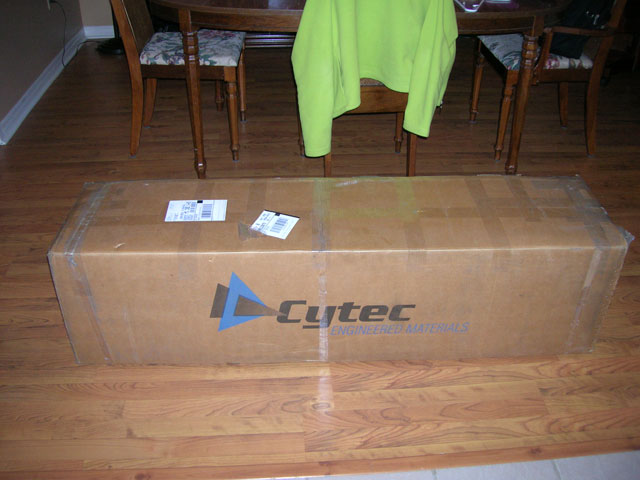
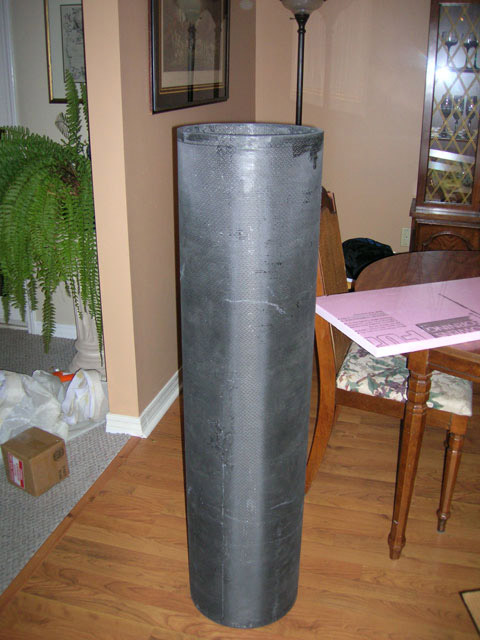
My first order of business was to paint the back plate and mount the
fans and mirror. I used silicone adhesive to bond the mirror to
the cell. The mirror is an excellent f5 mirror refigured by Steve Swayze.

Fans mounted
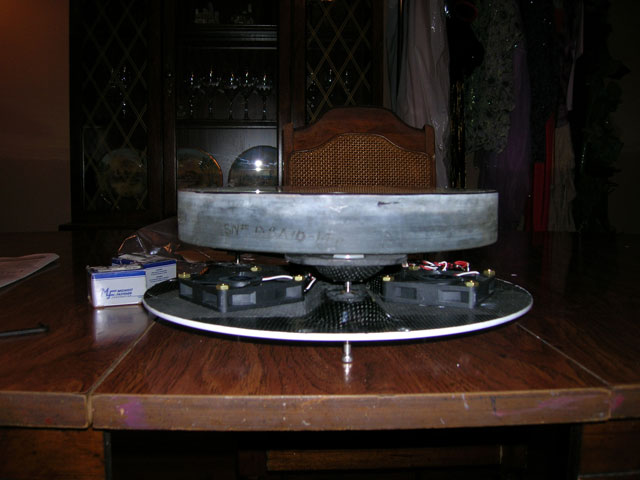
Mirror bonded and curing
I had ordered a spider assembly for my 2.6in Antares secondary from
Protostar. The mirror was left alone and the silicone left to
cure for about a month while awaiting the spider and secondary
holder. During the wait, I painted the tube and recalculated the
measurements for the placement of the focuser. The Moonligh CR-1 focuser shown here has been replaced by a Starlight Instruments Feather Touch. The moonlight experiance some flex with heavier cameras/filter wheel combinations.
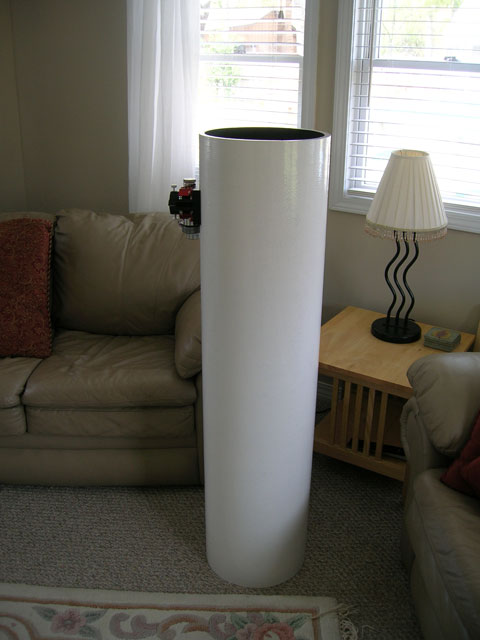

Finished Tube

Moon Light focuser
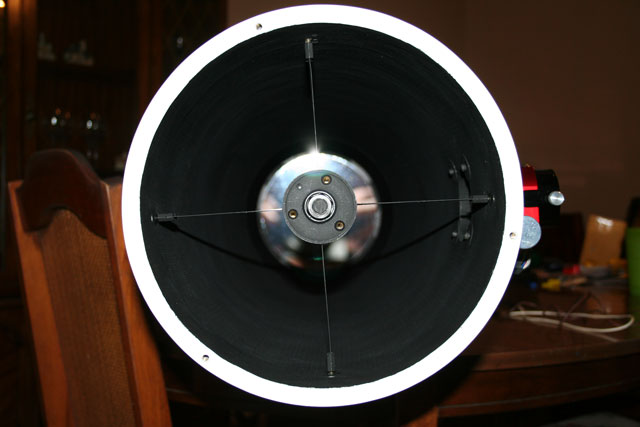
Spider and secondary installed
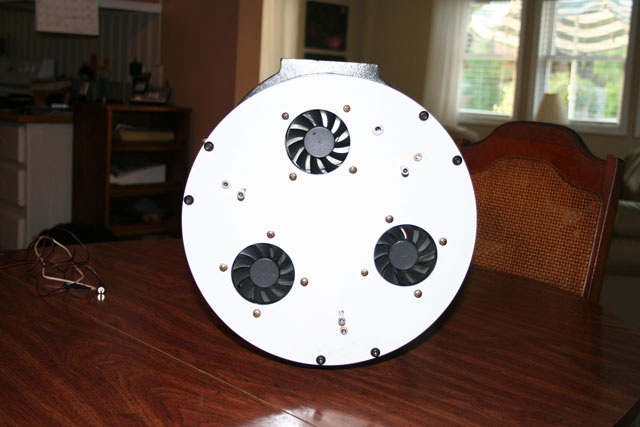
Backplate with mirror installed

Image showing push/pull collimation screws
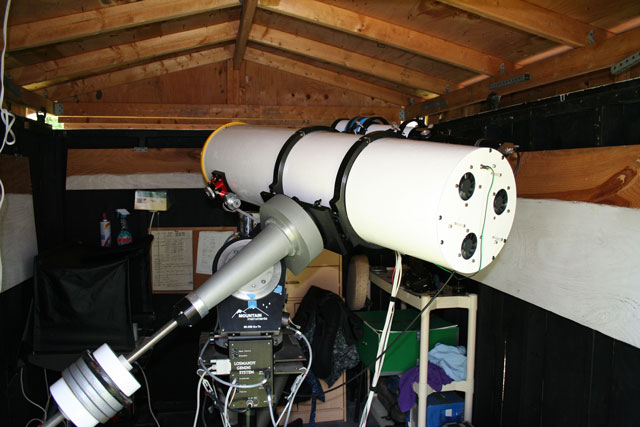
Mounted on my MI-250
I finally finished all the details and installed the secondary holder
and spider the 1st of May. The secondary is the heated version
offered by Protostar but I'm not sure if I'll need it since the fans
move alot of air. Since my tube inner diameter is smaller than
recommended by most Newt design programs, tube currents could be an
issue so I leave the fans running. Collimation was a smap using a
Howie Glatter laser collimator.
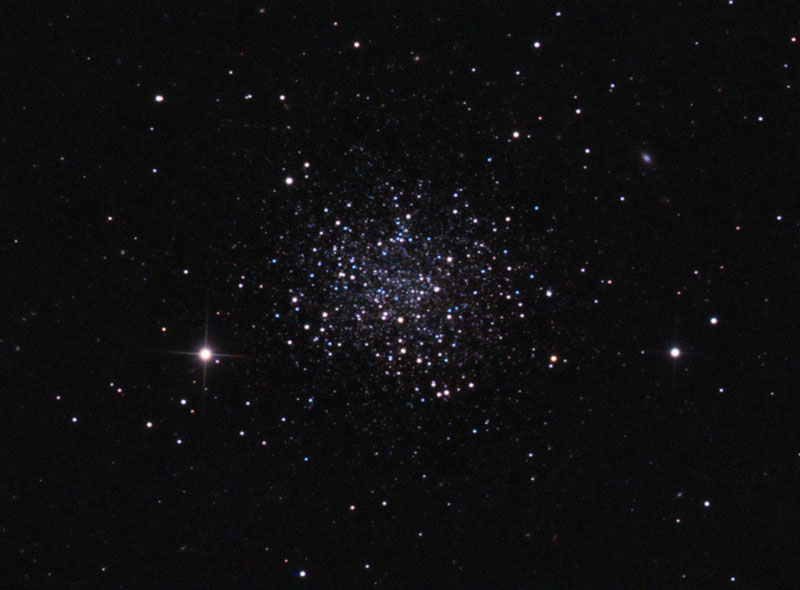
First light image of NGC 5053